The 30 Best Places to Live in Ohio: Guide to Top Cities and Towns

Ohio provides residents with a compelling combination of affordable living costs, strong job markets, and diverse communities that cater to various lifestyle preferences.
The state’s cities and suburbs consistently rank among the most livable places in the Midwest, offering everything from vibrant urban centers to charming small towns with excellent schools and low crime rates.
This comprehensive guide examines the top 30 places to live in Ohio, evaluating each location based on factors such as cost of living, educational opportunities, employment prospects, and overall quality of life.
From established suburbs near major metropolitan areas to college towns and historic communities, these locations represent the best Ohio has to offer for families, young professionals, and retirees seeking their ideal home.
Here are the 30 best places to live in Ohio:
30. Beavercreek

Beavercreek ranks among Ohio’s most desirable suburbs, located in the Greater Dayton area with a population of 46,787. The city consistently earns recognition as one of the best places to live in the state.
This Greene County suburb offers residents a dense suburban feel where most people own their homes. The community provides easy access to numerous restaurants and parks throughout the area.
The city’s proximity to Wright-Patterson Air Force Base makes it attractive to military families and professionals. Beavercreek also features excellent schools that draw families seeking quality education options.
Housing costs reflect the area’s desirability, with median home prices higher than Ohio’s state average. The city offers various neighborhoods including established areas and newer developments.
Residents benefit from convenient access to shopping, dining, and outdoor recreation opportunities. The combination of modern amenities and community atmosphere continues to attract new residents.
29. Springfield
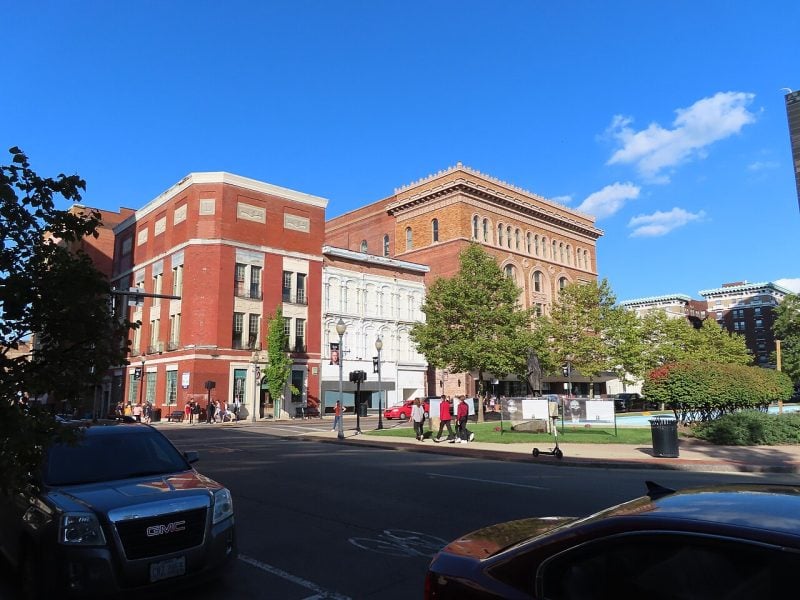
Springfield sits in west-central Ohio, positioned 30 miles northeast of Dayton and 45 miles west of Columbus. The city ranks 20th out of 755 Ohio cities according to BestPlaces.net.
The area offers affordable housing and a relatively low cost of living compared to other parts of the state. Springfield has the seventh highest average salary among all Ohio cities.
The metro area receives high marks for climate and air quality. Springfield’s diverse economy and historic infrastructure attract many residents.
Recent rankings placed Springfield sixth on a list of best places to live in Ohio. The city appeals to those seeking job opportunities, small business development, or retirement locations.
Springfield provides access to both relaxation and adventure activities within its vibrant culture and landscapes.
28. Loveland
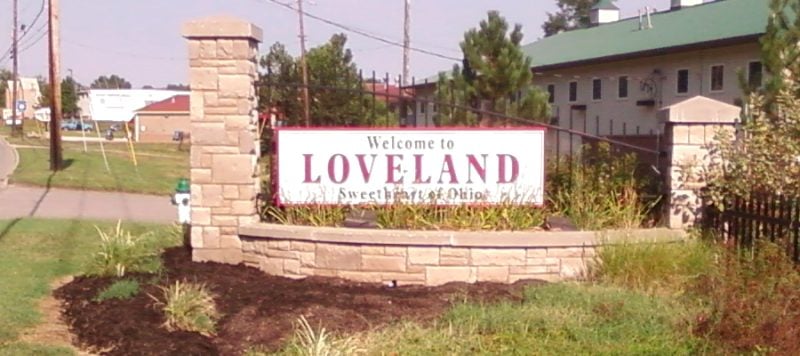
Loveland sits north of Cincinnati and carries the nickname “Sweetheart of Ohio.” The city is primarily residential with well-maintained single-family homes and sidewalks throughout most neighborhoods.
The community offers outdoor recreation through the Little Miami Scenic Trail, which provides biking and walking paths. Boathouse Park features additional trails with scenic views for residents.
Safety remains a strong point for Loveland. The city maintains well-lit streets and active neighborhood watch programs. Modern emergency response systems serve the community.
Loveland has received recognition from Cincinnati Magazine as one of their “Best Places to Live” multiple times. The city consistently ranks well in various quality of life categories.
Home of the Brave park provides family entertainment with both wet and dry play areas. The location offers easy access to nearby cities like Mason for additional amenities and activities.
27. Worthington
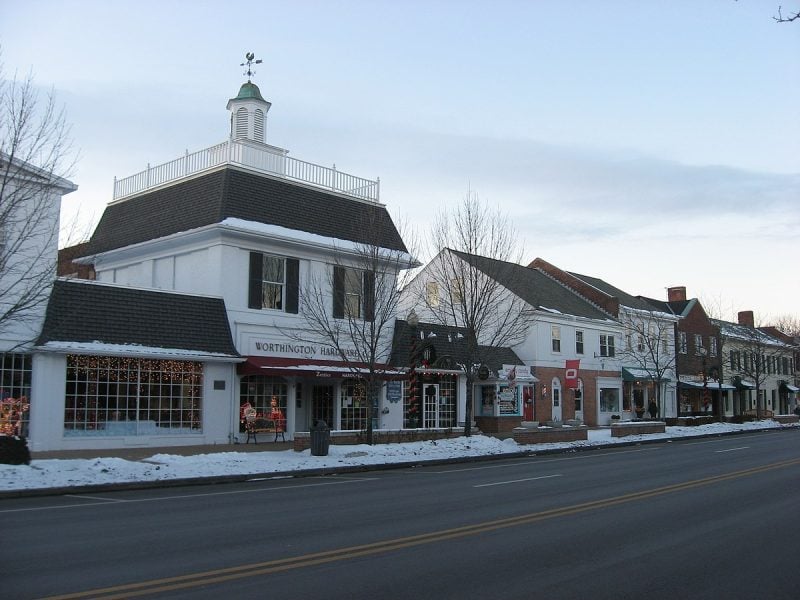
Worthington is a small suburb of Columbus in Franklin County with a population of 14,754. The city ranks 32 out of 486 cities nationwide for overall livability according to BestPlaces rankings.
This community offers residents a sparse suburban feel where most people own their homes. The area features numerous bars, restaurants, coffee shops, and parks that contribute to its appeal.
Worthington is known for its high quality of life and friendly neighborhoods. The suburb attracts residents with its range of home styles including modern townhomes, Colonial, Tudor, and Craftsman architecture.
The city provides access to some of the best public schools in the region. Sharon Woods Metro Park offers residents opportunities to experience nature through various outdoor activities.
Multiple parks, museums, and shops are located throughout the community. The area hosts plenty of festivals that add to the warm and welcoming atmosphere that residents appreciate.
26. Bexley
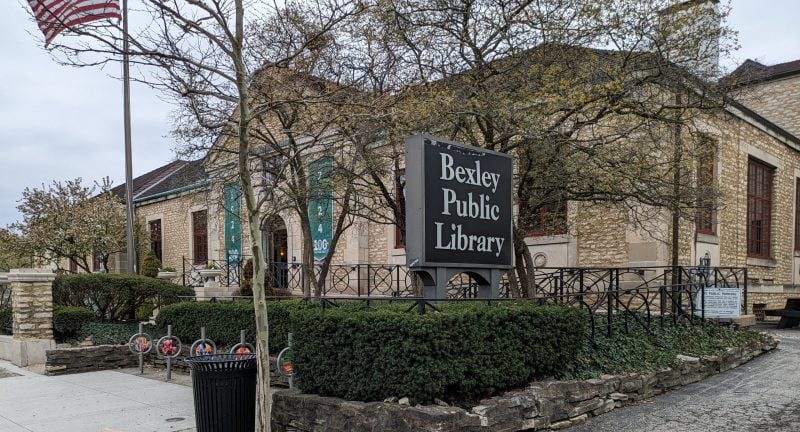
Bexley stands out as a premier Columbus suburb with approximately 13,800 residents. The city consistently earns recognition as one of Ohio’s best places to live.
This northeastern Columbus community offers short commuting times and high housing affordability compared to surrounding areas. Residents benefit from excellent safety ratings and top-tier educational opportunities.
The city excels in multiple quality-of-life categories including healthcare, arts and leisure amenities, and community diversity. Bexley’s walkable neighborhoods feature beautiful Victorian architecture, particularly in the Columbia Avenue Historic District.
Jeffrey Park provides residents with scenic gardens and walking trails for outdoor recreation. The annual Bexley Summer Celebration brings the community together with local events and festivities.
Families find Bexley particularly attractive due to its highly rated schools and safe environment. The city combines small-town charm with easy access to Columbus’s urban amenities and employment opportunities.
25. Westerville

Westerville is a Columbus suburb with a population of approximately 39,000 residents. The city sits in Franklin County and offers a dense suburban atmosphere where most residents own their homes.
The community features numerous restaurants, coffee shops, and parks throughout the area. Uptown Westerville serves as the historic downtown district with local shops and dining options alongside older residential properties.
Home prices in Westerville exceed Ohio’s average of $181,280. The city ranks well for its job market opportunities and school system quality.
Westerville maintains its designation as a Tree City USA community with abundant green spaces and natural areas. The location provides suburban living while maintaining access to Columbus metropolitan amenities.
The population consists of 52.5% female and 47.5% male residents. The demographic composition is 84.4% White, 7.2% Black or African American, and 3.2% multiracial.
24. Blacklick

Blacklick is a suburb of Columbus in Franklin County with a population of 8,867 residents. The community offers a sparse suburban feel that attracts families seeking a quieter lifestyle.
Most residents in Blacklick own their homes rather than rent. This ownership rate contributes to neighborhood stability and community investment.
The area features numerous parks that provide recreational opportunities for residents. These green spaces offer places for outdoor activities and family gatherings.
Blacklick’s location provides convenient access to Columbus while maintaining its suburban character. Residents can enjoy small-town living with big-city amenities nearby.
The community tends to attract families looking for a balance between urban access and suburban tranquility. Its proximity to major employment centers makes it appealing to commuters.
23. Strongsville
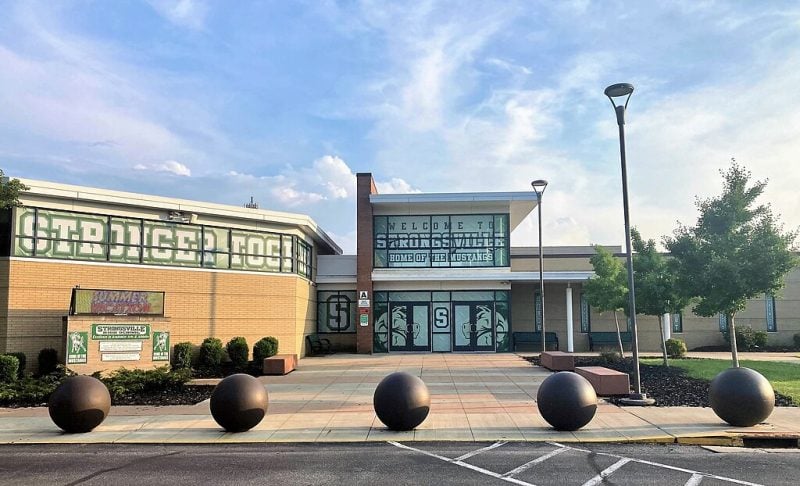
Strongsville ranks as a top suburban destination in Cuyahoga County with nearly 46,000 residents. This Cleveland suburb earned recognition as the 4th best city in Ohio according to national rankings.
The city offers a dense suburban atmosphere where most residents own their homes. Families benefit from an excellent school system and abundant parks throughout the community.
Strongsville’s business landscape includes small enterprises, national retailers, and major corporations like Vitamix. The local economy provides strong employment opportunities for residents.
Popular neighborhoods include Westwood Farms with upscale properties, family-oriented Waterford Crossing, and Chandler Commons featuring spacious lots. These areas offer diverse housing styles to meet different preferences.
The typical household earns $90,377 annually, significantly above the national median. The poverty rate sits at just 4.1%, demonstrating the community’s economic stability.
22. Hilliard

Hilliard stands as one of the most affluent suburbs of Columbus and ranks among the top places to live in Ohio. The city has experienced significant growth, with its population reaching 37,114 in 2020.
The community boasts a median household income of $102,283, substantially higher than the national average of $67,500. Its poverty rate sits at just 5.4%, which is 61% lower than the national rate.
Families are drawn to Hilliard for its excellent schools and family-friendly atmosphere. The city regularly hosts community events like the Old Hilliardfest Art & Street Fair and the annual Franklin County Fair.
Ohio Magazine recognized Hilliard as one of the state’s Best Hometowns. The recognition highlighted the city’s preservation of local history, development of community spaces, and support for small businesses.
Residents enjoy access to attractions like Weaver Park Nature Reserve and Darby Creek Golf Course, plus shopping at The Mall at Tuttle Crossing.
21. Stow

Stow ranks as the 11th best city to live in Ohio among 96 locations statewide. This Summit County community offers residents an attractive combination of affordability and quality of life.
The city maintains one of the lowest median home prices among Ohio municipalities. Despite affordable housing costs, Stow provides access to numerous recreational opportunities and outdoor activities.
Residents enjoy a poverty rate of 6.6%, which sits 53% below the national average. The typical household earns $76,883 annually, exceeding the national median income of $67,500.
Stow’s neighborhoods vary significantly in quality and home values throughout the city. The housing market reflects this diversity with options across different price ranges.
Silver Springs Park stands out as a popular destination among locals. The city provides hiking trails and various outdoor recreation sites that appeal to active residents and families.
20. North Royalton
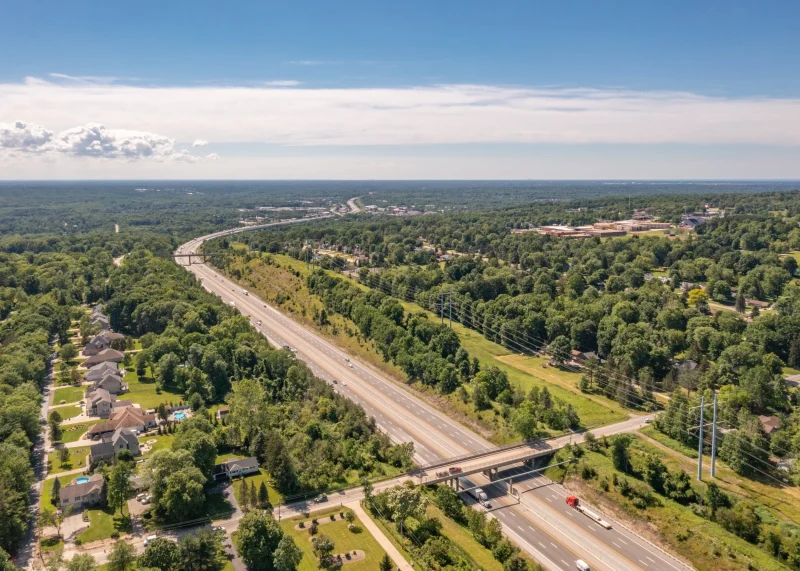
North Royalton stands out as one of Ohio’s premier suburban communities. This Cleveland suburb maintains a population of approximately 31,000 residents in Cuyahoga County.
The city offers residents a dense suburban atmosphere where most people own their homes. Families benefit from access to some of Northeast Ohio’s top-rated schools with strong academic programs and extracurricular activities.
North Royalton provides abundant recreational opportunities. The community features numerous parks, walking trails, and golf courses for outdoor enthusiasts.
Economic stability marks this area with a poverty rate of just 4.2%. The typical household earns $69,788 annually, which exceeds the national median income.
Safety and peaceful neighborhoods characterize daily life in North Royalton. Residents enjoy easy access to Cleveland’s amenities while living in a quieter suburban setting with plenty of green spaces.
19. Fairlawn
Fairlawn stands as a desirable suburb of Akron with a population of approximately 7,385 residents. The city maintains a median household income significantly higher than the national average.
The community ranks among Ohio’s top places to live due to its low cost of living and strong safety ratings. Public schools in Fairlawn receive positive evaluations from residents and ranking organizations.
Housing values vary considerably throughout different neighborhoods within the city. The real estate market reflects strong demand in the most sought-after areas.
Fairlawn’s location in Summit County provides residents with convenient access to regional amenities and employment opportunities. The city offers short commute times to nearby urban centers.
Crime rates remain relatively low compared to state and national averages. The community atmosphere emphasizes family-friendly living with various local amenities available to residents.
18. Canfield
Canfield stands out as one of Ohio’s premier residential destinations in Mahoning County. This suburb maintains a population of approximately 7,651 residents who enjoy a peaceful small-town atmosphere.
The community ranks among the safest places in Mahoning County due to its exceptionally low crime rates. Residents benefit from an excellent public school system that consistently receives high ratings.
The town offers a sparse suburban feel where most residents own their homes. Many retirees choose Canfield for its quiet environment and quality amenities.
Local attractions include well-maintained parks, hiking trails, and bike paths that draw visitors from surrounding areas. Shopping centers, restaurants, and museums provide convenient access to daily necessities and entertainment.
Canfield’s strategic location near Youngstown and Boardman offers easy access to larger metropolitan areas while maintaining small-town charm.
17. Olmsted Falls
Olmsted Falls is a suburb of Cleveland located in Cuyahoga County with a population of 8,640 residents. The city offers a dense suburban feel where most residents own their homes.
This charming community is known for its rich history and beautiful parks. Families make up a significant portion of the population, creating a family-friendly environment throughout the neighborhoods.
The Grand Pacific Junction serves as the downtown area, featuring restored historic shops and local businesses. Residents can visit Falls Ice Cream and Clementine’s tea shop among other establishments.
Home prices in Olmsted Falls align with Ohio’s state average of $181,280. The city provides good job opportunities and a variety of activities for all age groups.
Olmsted Falls originally was part of Olmsted Township before splitting to become its own municipality. The community maintains a peaceful yet vibrant atmosphere with scenic neighborhoods and proximity to various amenities.
16. Mason
Mason stands out as one of Ohio’s premier family destinations. This Warren County suburb sits just 30 minutes north of downtown Cincinnati.
The city has earned multiple national recognitions. Fortune magazine included Mason on its top 50 list for “Best Places To Live For Families” for the third time. WalletHub ranked it the fourth best city for raising families in Ohio.
Mason boasts highly rated public schools with a 95% graduation rate. The community offers abundant parks and recreational opportunities throughout Warren County, known as “Ohio’s Largest Playground.”
Housing primarily consists of single-family homes in suburban neighborhoods. The city maintains low crime rates and provides easy access to employment opportunities in the greater Cincinnati area.
With a population of approximately 36,000 residents, Mason successfully balances small-town charm with modern amenities and educational excellence.
15. Mentor
Mentor earned recognition as Ohio’s best place to live in 2025 according to U.S. News & World Report. The city ranked 138th nationally while claiming the top spot in the state.
This Lake Erie community offers nearly a mile of shoreline at Headlands Beach State Park. The beach represents the longest stretch along Ohio’s Lake Erie coast.
Mentor residents enjoy a median household income of $73,208, which exceeds the national average of $67,500. The city maintains a low poverty rate of 4.8%, significantly below national levels.
The 800-acre Mentor Marsh State Nature Preserve provides habitat for diverse wildlife and native plant species. Mentor Lagoons Nature Preserve & Marina offers additional recreational opportunities for outdoor enthusiasts.
With a population of approximately 47,075 residents, Mentor combines suburban amenities with natural attractions. The city’s ranking reflects strong performance in categories including value, job market, and quality of life factors.
14. Gahanna
Gahanna stands out as one of Ohio’s premier suburban communities. This Franklin County city offers residents a dense suburban atmosphere while maintaining easy access to Columbus.
The community boasts a population of approximately 35,400 residents. Most residents own their homes, creating stable neighborhoods throughout the area.
Gahanna’s school system consistently ranks among Ohio’s top performers. This educational excellence attracts families seeking quality learning environments for their children.
The city maintains a low crime rate and strong economic foundation. These factors contribute to Gahanna’s high livability rankings across multiple national surveys.
Residents enjoy numerous parks and recreational opportunities. Creekside Park and Trail provide popular outdoor spaces for community activities.
The median household income reaches $89,945, significantly higher than national averages. This economic prosperity reflects the area’s strong job market and professional opportunities.
Gahanna features diverse dining options, coffee shops, and local businesses that serve the community.
13. Fairfield
Fairfield serves as a growing suburb of Cincinnati, offering residents a balanced mix of residential, commercial, and industrial areas. The city provides convenient access to major metropolitan amenities while maintaining its own distinct community identity.
The housing market in Fairfield varies significantly across different neighborhoods. Home values and quality of life differ considerably throughout the city, giving residents various options based on their preferences and budget.
Fairfield attracts families and professionals seeking suburban living with urban proximity. The city combines affordable housing options with access to employment opportunities in the greater Cincinnati area.
Public schools and local amenities contribute to the community’s appeal for families. The area maintains lower crime rates compared to many urban centers while offering recreational and shopping facilities for residents.
12. New Albany
New Albany stands out as one of Ohio’s premier suburban communities. This Franklin County city has earned national recognition, including the top spot on Business Insider’s list of America’s best suburbs.
The community offers residents a sparse suburban feel with excellent amenities. Most residents own their homes in this well-planned city of approximately 10,500 people.
New Albany boasts exceptional public schools and maintains a high graduation rate. The city provides numerous parks and recreational opportunities for families and individuals alike.
Safety remains a key advantage, with New Albany maintaining consistently low crime rates. The median household income reaches approximately $185,000, reflecting the community’s economic prosperity.
Located about 20 minutes from Columbus, residents enjoy easy access to urban amenities while maintaining suburban tranquility. The city features picturesque landscapes and maintains strong community spirit throughout its various neighborhoods.
11. Solon
Solon ranks as one of Ohio’s premier places to live. This Cleveland suburb has a population of approximately 24,000 residents in Cuyahoga County.
The city offers a sparse suburban atmosphere where most residents own their homes. Families find excellent amenities including numerous restaurants and well-maintained parks throughout the community.
Solon’s economic strength stands out with a median family income nearly double the national average. This financial stability contributes to the area’s high desirability among homebuyers.
The community maintains moderate political views and provides a balanced living environment. Residents enjoy access to quality neighborhoods with varying home values across different areas.
Annual events like Solon Home Days bring the community together each July. This weekend celebration features local food, live music, and family-friendly activities that strengthen neighborhood connections.
10. Granville
Granville stands out as one of Ohio’s premier small towns, earning top rankings for quality of life. This Licking County village houses 5,916 residents and sits 30 miles east of Columbus.
The town offers historic charm with practical modern amenities. Broadway Street features colorful awnings and restored storefronts that create an inviting downtown atmosphere.
Granville attracts young professionals and retirees alike. The community provides excellent schools, secure neighborhoods, and abundant parks for outdoor recreation.
Housing costs reflect the area’s desirability, with most residents owning their homes. The sparse suburban feel appeals to those seeking small-town living with urban access.
Multiple ranking organizations consistently place Granville among Ohio’s best communities. The town balances economic diversity with cultural attractions and maintains its reputation for safety and educational excellence.
9. Athens
Athens ranks as the third best city to live in Ohio according to multiple quality-of-life assessments. The city combines affordable living costs with strong educational opportunities centered around Ohio University.
Housing costs remain reasonable compared to state averages. Neighborhoods vary significantly in quality and median home values throughout the area.
The Athens Metro Area receives high marks for its public school system, ranking ninth out of 610 districts statewide. This makes it attractive for families with school-age children.
Crime rates tend to be lower in the more desirable residential areas. The presence of the university creates a vibrant atmosphere with cultural amenities and events.
Cost of living sits approximately 12 percent below national averages. Local amenities include parks, restaurants, and entertainment venues that serve both residents and students.
8. Yellow Springs
Yellow Springs stands out as one of Ohio’s most distinctive small towns. This Greene County village has a population of approximately 3,700 residents.
The community earned recognition on Money.com’s Top 50 Best Places to Live in the U.S. 2024 list. It ranks among the top 10 places to live in Ohio according to BestPlaces rankings.
The town features numerous locally-owned boutiques, restaurants, and pubs. Its vibrant farmers’ market showcases local produce and artisanal goods.
Yellow Springs offers excellent schools and maintains low crime rates. The median home price is $320,000, reflecting the area’s desirable character.
Annual events like the Street Fair and Blues Festival celebrate the community’s spirit. Natural beauty surrounds the village through multiple local parks and outdoor spaces.
7. Hudson
Hudson consistently ranks among Ohio’s premier communities. This Summit County suburb offers residents a blend of suburban tranquility and urban convenience.
The city boasts impressive economic indicators. The median household income reaches $133,418, significantly above the national average. The poverty rate stands at just 2.9%.
Hudson scored 79 out of 100 in overall livability rankings. Housing quality received particularly high marks with an 88 score from BestPlaces.net.
Residents enjoy access to numerous restaurants, coffee shops, and parks. The community maintains a sparse suburban character where most people own their homes.
Cleveland Magazine recognized Hudson as one of 2024’s best places to live among Cleveland suburbs. The city provides easy access to outdoor recreation, including proximity to Ohio’s national park areas.
Hudson attracts families and professionals seeking quality schools and safe neighborhoods in northeastern Ohio.
6. Shaker Heights
Shaker Heights consistently ranks among Ohio’s top places to live. The Cleveland suburb earned first place in Niche.com’s Best Places to Live in Ohio for 2024.
This Cuyahoga County community has a population of 29,004 residents. Most people own their homes in this urban-suburban environment.
The city offers excellent schools and maintains one of the lowest crime rates in the nation at 6.4 out of 10. Residents enjoy numerous restaurants, coffee shops, and parks throughout the area.
Home values in Shaker Heights exceed Ohio’s state average of $181,280. The higher prices reflect the community’s desirability and quality amenities.
Shaker Heights received recognition as the second-best place to raise a family in Northeast Ohio Parent Magazine’s 2024 rankings. The combination of safety, schools, and community features makes it attractive to families.
5. Westlake
Westlake stands out as one of Ohio’s most desirable suburban communities. Located in Cuyahoga County near Cleveland, this city of approximately 34,000 residents consistently ranks among the state’s top places to live.
The community boasts impressive economic indicators. The typical household earns $92,917 annually, significantly higher than the national median of $67,500. The poverty rate sits at just 4.9%, which is 65% lower than the national average.
Safety remains a key strength for Westlake. The city maintains low crime rates that contribute to its high livability rankings. Families particularly value the excellent school system and abundant recreational opportunities.
Westlake offers a dense suburban atmosphere where most residents own their homes. The area features numerous restaurants, coffee shops, and parks that enhance daily life. The comfortable climate with mild temperatures year-round appeals to many residents seeking consistent weather patterns.
4. Powell
Powell stands out as one of Ohio’s most livable communities with a score of 82 out of 100. This Delaware County suburb sits just north of Columbus, offering convenient access to urban amenities while maintaining its small-town character.
The city attracts families seeking a rural feel within reach of metropolitan opportunities. Most residents own their homes in this community of approximately 14,000 people.
Powell provides abundant outdoor recreation through numerous parks and trail systems. The Scioto River and Olentangy Trail offer residents excellent opportunities for hiking, biking, and nature activities.
Local businesses, shops, and restaurants create a vibrant downtown atmosphere. The community maintains a close-knit, friendly environment that appeals to those seeking suburban living.
The area benefits from its proximity to Columbus while preserving green spaces and a more relaxed pace of life.
3. Cincinnati
Cincinnati ranks among Ohio’s top cities for quality of life and livability. The Queen City offers residents a blend of urban amenities and affordable living costs.
The city spans 52 distinct neighborhoods, each contributing unique character to the metropolitan area. Housing options range from historic districts to modern developments across diverse price points.
Cincinnati’s location along the Ohio River provides scenic beauty and recreational opportunities. The city sits near the Kentucky and Indiana borders, offering easy access to neighboring states.
Public schools, crime rates, and local amenities factor into the city’s strong livability rankings. The metro area consistently appears on national best places to live lists.
Employment opportunities exist across multiple industries within the greater Cincinnati region. The city’s infrastructure supports both established businesses and emerging sectors.
Residents enjoy pleasant weather during spring and early summer months. The area’s cultural attractions and dining scene add to its appeal for families and young professionals.
2. Dublin
Dublin stands as one of Ohio’s premier suburban communities, located northwest of Columbus. This Franklin County city houses approximately 46,500 residents in a well-planned environment.
The city earned recognition for exceptional public schools that attract families seeking quality education. Dublin’s school district consistently ranks among the state’s best performers.
Housing options feature modern, luxurious homes in well-maintained neighborhoods. Most residents own their properties, contributing to community stability and pride.
The area offers abundant amenities including numerous restaurants, coffee shops, bars, and parks. Business development creates local employment opportunities while maintaining suburban character.
Dublin provides a sparse suburban atmosphere that balances quiet residential living with convenient access to urban amenities. The community emphasizes safety and family-friendly environments.
Recent surveys ranked Dublin among top U.S. cities for livability, quality of life, and municipal services, reflecting its strong governance and resident satisfaction.
1. Columbus
Columbus stands as Ohio’s capital and largest city, offering residents a blend of urban amenities and Midwestern charm. The city ranks among the top places to live in Ohio according to recent studies.
The metropolitan area features diverse neighborhoods with varying home values and characteristics. Downtown apartments provide urban living options, while historic villages offer more traditional community settings.
Columbus scores well in multiple livability categories including healthcare quality and overall happiness metrics. The city maintains relatively strong public schools and reasonable cost of living compared to other major metropolitan areas.
Crime rates vary significantly across different neighborhoods within Columbus. Residents can find areas that match their preferences for safety, amenities, and community atmosphere.
The city’s size provides extensive job opportunities while maintaining accessibility that larger cities often lack.
What to Consider When Choosing a Place to Live in Ohio
Ohio’s cost of living sits 17% below the national average, with median home prices around $243,000 and approximately 295,000 job openings across the state. Key factors include housing costs, employment prospects, and community amenities that vary significantly between cities like Columbus, Cincinnati, and Cleveland.
Cost of Living Factors
Housing costs represent the largest expense for most Ohio residents. The median home price of $243,000 varies considerably by location, with urban areas like Columbus commanding higher prices than smaller communities.
Housing Market Variations:
- Columbus metro area: Higher prices due to job growth
- Cleveland: More affordable options with urban amenities
- Cincinnati: Moderate pricing with diverse neighborhoods
- Rural areas: Significantly lower costs but fewer services
Property taxes differ by county and school district. Franklin County averages 1.02% while Hamilton County sits at 0.87%. These rates directly impact monthly housing expenses.
Utility costs remain relatively stable statewide. Electric rates average $0.12 per kWh, while natural gas heating costs vary seasonally. Internet and cable services typically cost $60-120 monthly depending on provider and package.
Transportation expenses depend on location choice. Urban areas offer public transit options, while rural locations require personal vehicles and higher fuel costs.
Employment Opportunities
Ohio’s diverse economy spans healthcare, manufacturing, technology, and education sectors. Columbus leads in government and corporate headquarters, while Cincinnati focuses on consumer goods and healthcare.
Major Employment Sectors:
- Healthcare: Largest employer statewide
- Manufacturing: Strong automotive and aerospace presence
- Technology: Growing fintech and software development
- Education: Universities and research institutions
Unemployment rates vary by region. Columbus maintains rates below state average due to diverse job market. Cleveland and Dayton face higher unemployment in traditional manufacturing areas.
Salary expectations align with cost of living differences. Columbus professionals earn 15-20% more than similar positions in smaller cities. Remote work opportunities have increased access to higher-paying positions regardless of location.
Community and Lifestyle Amenities
Educational quality varies significantly across Ohio districts. Suburban districts like Dublin and Upper Arlington consistently rank among top performers, while urban districts show mixed results.
Cultural amenities concentrate in major metropolitan areas. Columbus offers professional sports teams, museums, and entertainment districts. Cincinnati provides riverfront attractions and historic neighborhoods.
Recreation opportunities span from Lake Erie beaches to Hocking Hills hiking trails. Urban areas feature extensive park systems, while rural locations provide outdoor recreation access.
Transportation Infrastructure:
- Major highways connect all regions
- Public transit available in Columbus, Cincinnati, Cleveland
- Airports serve domestic and international destinations
- Walkability varies dramatically by neighborhood
Healthcare access remains strong in populated areas. Cleveland Clinic and Ohio State University Medical Center provide world-class care, while rural areas may have limited specialist availability.
Quality of Life in Top-Rated Ohio Cities
Ohio’s leading communities offer residents exceptional educational opportunities through highly-rated school districts and prestigious universities, comprehensive healthcare networks anchored by renowned medical centers, and diverse transportation options that support both urban and suburban lifestyles.
Education and School Systems
Dublin City Schools consistently ranks among Ohio’s top districts with a 95% graduation rate. The district serves over 15,000 students across 18 schools.
Upper Arlington and Bexley school districts maintain similar excellence standards. Both communities invest heavily in STEM programs and advanced placement offerings.
Higher education institutions strengthen Ohio’s appeal for families and young professionals. The University of Cincinnati and Xavier University provide research opportunities and cultural programming to the greater Cincinnati area.
Ohio State University anchors the Columbus region with over 65,000 students. Case Western Reserve University serves Cleveland with programs in medicine, engineering, and business.
Community colleges throughout Ohio offer workforce development programs. Columbus State Community College and Cuyahoga Community College provide affordable pathways to four-year degrees and technical certifications.
Private school options exist in major metropolitan areas. Catholic schools, Montessori programs, and independent academies serve families seeking alternative educational approaches.
Healthcare Access and Services
Cleveland Clinic operates as one of the nation’s top-ranked hospitals. The system includes multiple locations throughout northeastern Ohio and specializes in cardiac care, cancer treatment, and neurological services.
Cincinnati Children’s Hospital ranks among the country’s best pediatric facilities. The medical center provides specialized care for complex childhood conditions and maintains research programs.
OhioHealth serves central Ohio through multiple hospital locations. The network includes Riverside Methodist Hospital and Grant Medical Center in Columbus.
Rural areas receive healthcare support through regional medical centers. Mercy Health operates facilities in smaller communities across western and southern Ohio.
Mental health services expand through community health centers. Many Ohio cities now offer integrated behavioral health programs within primary care settings.
Urgent care centers provide convenient access to non-emergency medical services. Most major Ohio cities feature multiple urgent care options with extended hours.
Transportation and Commute Times
COTA bus service connects Columbus neighborhoods with downtown employment centers. The system operates 41 routes and provides service to major suburbs including Dublin and Westerville.
Cincinnati’s Metro bus system serves three counties. The Cincy Red Bike program offers bike-sharing stations throughout downtown and surrounding neighborhoods.
Highway access supports commuting patterns across Ohio’s major cities. Interstate 270 circles Columbus, while Interstate 275 provides similar connectivity around Cincinnati.
Cleveland’s RTA rapid transit system includes rail service to Hopkins International Airport. The Red Line connects downtown Cleveland with eastern suburbs.
Average commute times remain reasonable in most Ohio cities. Columbus residents average 23 minutes, while Cincinnati and Cleveland commuters typically spend 22-25 minutes traveling to work.
Walkability varies significantly between neighborhoods. Downtown areas in Columbus, Cincinnati, and Cleveland offer pedestrian-friendly environments with mixed-use development.





